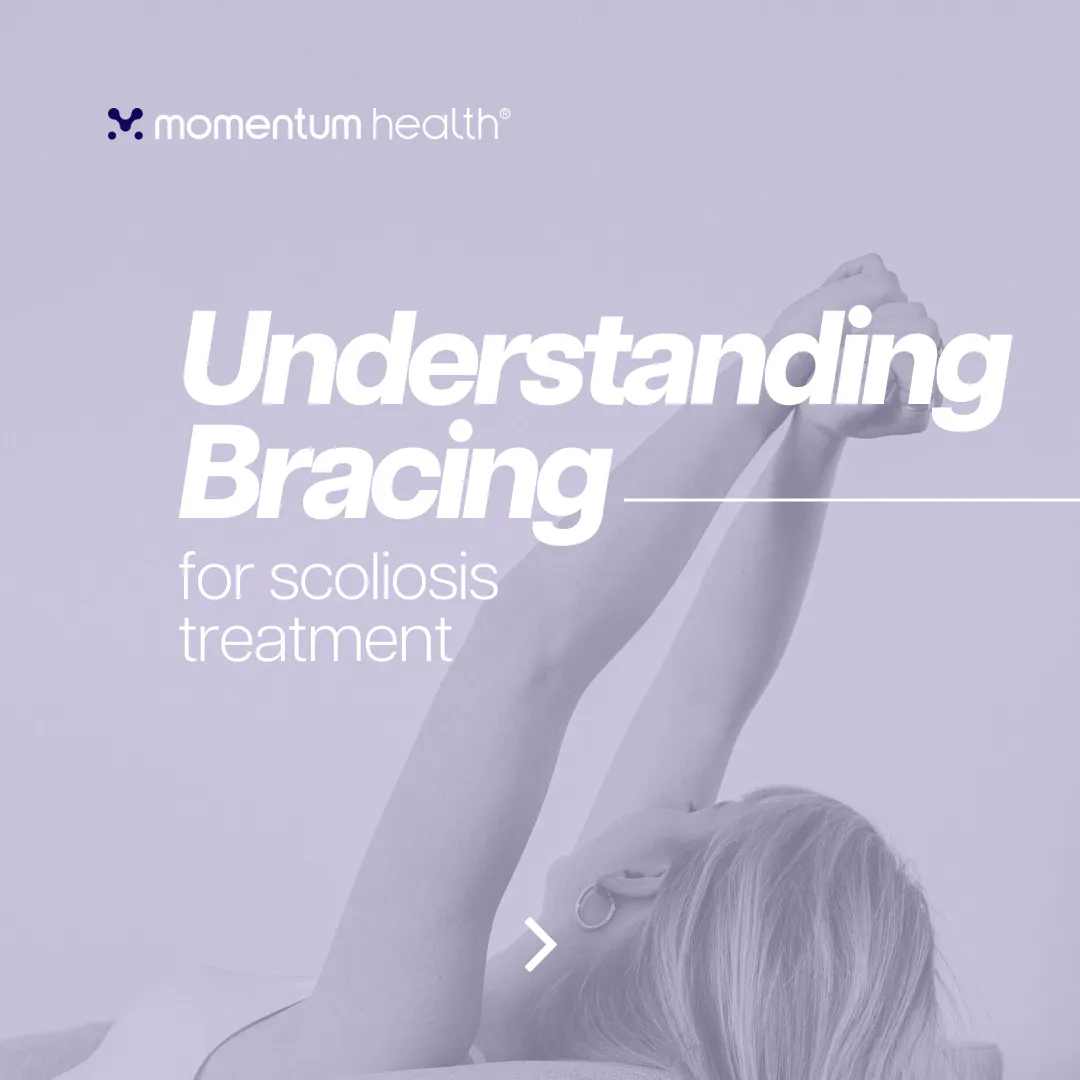
Reading Time
3
Published
Jan 29, 2024
Orthotics for Scoliosis: Understanding the Complexity of Bracing
Scoliosis, characterized by an abnormal curvature of the spine, often requires treatment to prevent progression. Bracing plays a vital role in scoliosis management, providing crucial support and influencing spinal alignment. In this overview, we explore the reasons for bracing, the various types available, and the intricate process of creating personalized braces.
Written By
Momentum Health
Bracing is a common approach, particularly for adolescents with moderate curves. The primary goal is to prevent progression, especially during growth spurts. Braces exert pressure on the spine, guiding its development and providing stability. While they do not improve curves, they aim to limit any further deterioration.
Various types of braces exist, each with their unique characteristics. Braces are meant to be worn either full-time (16-23 hours per day) or just during sleep. The following is a list of the most common braces used to treat scoliosis:
Boston Brace: A custom-molded plastic brace covering the torso, discreetly worn under clothing. Prescribed for thoracic or lumbar curves.
Milwaukee Brace: Extends from neck to hips with a neck ring for added support. Effective for thoracic curves, particularly higher curvature levels.
Charleston Bending Brace: A night-time brace worn while sleeping, providing targeted pressure to correct curvature as the spine flexes during sleep.
Wilmington Brace: A custom-molded plastic brace designed to be worn 23 hours a day, focusing on comfort and concealment.
Providence Brace: Dynamic and adjustable, designed to be worn only at night. Offers flexibility and comfort.
The process of creating a new brace can be laborious and time consuming for both the patient and their family. Once a brace is prescribed, the orthotist will consult X-rays and take measurements to guide brace customization. Unique molding or computer-aided design models are created based on the measurements and assessments. Lightweight, durable materials like thermoplastics are chosen for comfort and effectiveness. Patients undergoing brace treatments benefit from regular follow-ups to ensure the brace is effective and any necessary adjustments are performed to maximize comfort.
Bracing, while effective, often presents challenges. Compliance (how many hours per day the brace is actually worn), particularly among adolescents, requires dedication and resilience. Wearing a brace in public can be daunting and influence self-esteem, especially in teens. Addressing the emotional impact of brace wear is crucial, and support from caregivers and healthcare professionals is essential to working through this tough period.
Bracing for scoliosis is pivotal during growth periods for preventing curve progression. Understanding the benefits of bracing, the various types, and the customization process empowers individuals and their support systems to remain compliant. While challenges are frequent, the potential benefits underscore bracing's importance in scoliosis care.
If you have any questions about bracing for your scoliosis, do not hesitate to reach out and talk to your physician.
Find Momentum Health on:
Instagram: @momentum.health.ai
Tiktok: @momentum_health
LinkedIn: Momentum Health